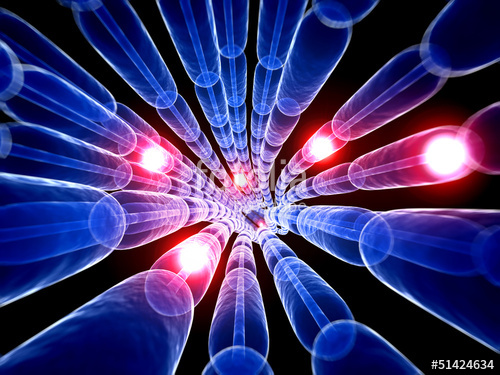-

-
Form, Body and Space. Aesthetics, Cognition and Anthropology of Art
March 23, 24th 2017List of participantsOrganisers
Pr. Vittorio GALLESE, Université de Parme, Italie; Université de Londres, UK
Pr. Carlo SEVERI, EHESS, LAS, Collège de FranceSpeakers
Sir Colin BLAKEMORE, Université de Londres, UK
Pr. Maurice BLOCH, Professeur Emérite, LSE, UK
Pr. Michele COMETA, Università degli Studi di Palermo, Italie
Pr. Susanne KÜCHLER, University College of London, UK
Pr. Els LAGROU, Université Fédérale, Rio de Janeiro, Brésil
Pr. Arnaud MORVAN, LAS, Collège de France
Mme Isabella PASQUALINI, EPFL, Suisse
Pr. Andrea PINOTTI, Università Statale, Milan, Italie
Pr. Alexandre SURRALLES, LAS, Collège de FranceTopicIn his famous The Problem of Form in Painting and Sculpture, Hildebrand remarked that works of art provoke particular mental operations not because they are based on direct observation of the real, but because they emerge out of a complex process of recollection of the real image:
“To perceive and to represent an object are two very different processes. Look to an object, and then turn your back to it. What is left in your mind is very different from your first visual impression. Clearly, some parts of the image persist in your mind. Other parts of it disappear. The first act is a perception. The second is a representation. We can draw the conclusion that the representation of an object depends on memory, not on perception”Consequently, it is visual memory (not perception) that is, properly speaking, the object of an artist’s action. The artist’s work involves, in Hildebrand’s words, a constant “evaluation of appearances”. But this attentiveness to the real does not imply the attempt to imitate nature. Instead, it aims to identify an organizing principle of perception, expressed in the presence of a form. For Hildebrand, form is neither a property of the exterior world nor a subjective aspect of experience proper to artistic activity. Instead, it describes the unconscious perception of space, which constantly orients the gaze. This “feeling” (which today we would more likely term an unconscious reflex) both gives orientation to our movement and marks the presence of our body in space. It follows that any image that implies, for instance, depth and movement aims not to imitate appearances, but to represent space via the labour of looking. Hildebrand concludes that the artist’s work constantly refers to the specific work of mind, which generate the unconscious representations of the body in space. For Hildebrand, the process of discovering this mental substrate is as much a matter of exploring the labour of looking as of provoking an unconscious feeling for space.
In this two-days seminar, we would like to gather a group of scholars working in the fields of Aesthetics, Neuroscience and Social Anthropology. We would like to start from Hildebrand’s remarks to pose basically two groups of questions. The first group of questions might concern Aesthetics and Neuroscience. Is Hildebrand’s view of the relationship between Form, Body and Space, which has been so influential in the XXth Century’s History of Art and Aesthetics, confirmed by recent research in Neuroscience? Conversely, can this kind of research be understood as a New Formalism, a way to proceed further in the path first indicated by Hildebrand?
The second group of questions concerns Social Anthropology and the study of cultural variation. As it is well known, Hildebrand’s remarks are perfectly appropriate to the interpretation of perspective and, more generally, to modern Western Art. Are they useful for the understanding of other iconographical traditions, like, for instance, Australian or Amazonian Iconographies? In this case, how would it be possible to discover other forms of relationships between Form, Body and Space? Would it be imaginable to assume the analysis of these relationships as a basis for cultural comparison?
In a final session, devoted to general discussion, we will try to cross these questions and points of view, in order to understand how these different perspectives might benefit from one another.
-

-
The number of queen : causes and consequences
March 17, 18th 2016List of participantsOrganisers
Pr. Patrizia D’ETTORRE, Université Paris 13, Paris, France
Dr. Raphaël JEANSON, University Paul Sabatier, Toulouse, FranceSpeakers
Dr. Serge ARON, Université Libre de Bruxelles, Belgique
Dr. Abel BERNADOU, Université de Regensburg, Allemagne
Pr. Kevin BERTHELOT, Université Paul Sabatier, Toulouse, France
Pr. Jacobus BOOMSMA, Université de Copenhagen, Danemark
Pr. Raphaël BOULAY, Université François Rabelais de Tours, France
Pr. Michel CHAPUISAT, Université de Lausanne, Suisse
Pr. Juergen HEINZE, Université de Regensburg, Allemagne
Dr. Elise HUCHARD, CNRS, France
Pr. Maria Cristina LORENZI, Université Paris 13, Paris, France
Dr. Thibaud MONNIN, Université Pierre et Marie Curie, Paris, France
Pr. Liselotte SUNDSTRÖM, Université d’Helsinki, Finlande
Pr. Christine WEBB, CNRS, France
Pr. Tom WENSELEERS, KU Leuven, BelgiqueTopicA major feature of insect societies is the existence of reproductive division of labour, whereby reproduction is monopolised by one or a few individuals assisted by a non-reproductive worker caste. In ants, the existence of variations in the number of reproductives is a labile trait that has drawn much attention. The number of queens can be extremely variable among species as well as within species. It is now generally accepted that polygyny (a colony headed by more than one queen) is a derived trait and may be the predominant social structure in ants. The evolution of polygynous colonies from a single queen ancestor may challenge the evolutionarily explanation of reproductive altruism. Ant queens start new colonies in one of two basic ways. They can be either accompanied by workers (i.e. dependent founding) or found colonies independently, without the aid of workers. In the latter case, queens can either found alone (haplometrosis), or they may cooperate with other queens during colony foundation (pleometrosis). The maintenance of this initial cooperation between queens is relatively rare but it exists and can lead to the co-existence of several reproductives within the colony (primary polygyny). However founding associations are generally temporary and soon reduce to a single egg-laying queen (secondary monogyny), either before or shortly after the emergence of the first workers. The process of elimination of all but one co-founding queens is not clearly understood. In contrast to primary polygyny, secondary polygyny develops as a consequence of colony fusion or when established colonies adopt additional inseminated queens that can be daughters of the mother queen, or not, depending on the species and the ecological constraints. This richness and variability in the mode of colony foundation is unique to ants. The diversity of strategies of breeding systems, colony foundation and colony growth has drastic consequences on colony kin structure (within colony relatedness), and therefore on the delicate balance between cost and benefits of eusocial life, which typically underlines internal conflicts over reproduction.
Lire la suite. Download the file
Rapport Séminaire Polygynie Fondation Fyssen 2016
-

-
Social and Cognitive Dimensions of Technological Change
December 2nd & 3rd 2015List of participantsOrganiser
Pr. Carl KNAPPETT, Université de Toronto
Speakers
Pr. Brian ARTHUR, Institut de Santa Fe, USA
Pr. Andrew BEVAN, University College of London, UK
Pr. Ludovic COUPAYE, University College of London, UK
Pr. Susanne KUCHLER, University College of London, UK
Pr. Pierre LEMONNIER, Directeur de recherche émérite au CNRS, France
Pr. Lombros MALAFOURIS, Keble College, University of Oxford, UK
Pr. Diamantis PANAGIOTOPOULOS, Université de Heidelberg, Allemagne
Pr. Carlo SEVERI, EHESS, France
Pr. Barbara STAFFORD, University de Chicago, USA
Pr. Sander VAN DER LEEUW, Arizona State University, USAGuests
David BOURGARIT, Anick COUDART, Arianne DE SAXCE, Armance DUPONT DELALEUF, François GILIGNY, Quentin LETESSON, Sophie MERY, Laurent OLIVIER, Perig PITROU, Nathan SCHLANGER
Topic‘Materiality’ has become a hot topic across the humanities and social sciences. Under this single umbrella term a wide range of approaches are trying to find shelter; some of them are so divergent, however, as to barely be in dialogue. They range from philosophy (Harman) and political science (Conolly, Bennett), to history (Trentmann), sociology (Cerulo, Shove, Molotch), social anthropology (Lemonnier, Coupaye, Miller), and archaeology (Shanks; Hodder). Some viewpoints orient themselves towards psychology and cognitive science, others towards biology, while others characterize themselves as relational and practice-based. This broad interdisciplinary concern with materiality, particularly considering both its technological and cognitive dimensions, makes it a suitable theme for a Fyssen seminar.
-

-
Thought control: operations and signals
March, 19, 20th 2015List of participantsOrganisers
Pr. Patrick HAGGARD, University College London, UK
Pr. Etienne KOECHLIN, INSERM, Ecole Normale Supérieure, France
Dr.Valerian CHAMBON, CNRS, Ecole Normale Supérieure, FranceSpeakers
Pr. Paul BURGESS, University College London, UK
Dr. Floris DE LANGE, Radboud University Nijmegen, Pays Bas
Pr. Stephen FLEMING, New York University, USA, University of Oxford, UK
Dr. Sam GILBERT, University College London, UK
Pr. Thomas GOSCHKE, Technische Universität Dresden, Allemagne
Dr. Sakai KATSUYUKI, University of Tokyo, Japon
Dr. Ricarda SCHUBOTZ, University of Münster, Allemagne
Pr. Markus ULLSPERGER, Radboud University Nijmegen, Allemagne
Dr. Valentin WYART, INSERM, Ecole Normale Supérieure, FranceTopicRecent progress in cognitive neuroscience has generated a new interest in control of higher thought, with improved experimental and theoretical models. However, it remains challenging to link computational models of thought processing to behavioural data, and to the experiences generated by those processes. This seminar aims to bring together experts on metacognition, executive function and cognitive modelling, to share recent knowledge of these topics, and identify future research questions.
-

-
Translating Worlds – The epistemological space of translation
March 20, 21th 2014List of participantsOrganisers
Pr. William HANKS, Université de Californie, Berkeley, USA
Pr. Carlo SEVERI, EHESS, Paris, FranceSpeakers
Pr. Antonetta BRUNO, Università di Roma Sapienza, Italie
Pr. Adam CHAU, University of Cambridge, UK
Dr. Emmanuel DEVIENNE, Université Paris Ouest- Nanterre, France
Dr. Terra EDWARDS, University of California, Berkeley, USA
Pr. Carlos FAUSTO, Université Fédérale de Rio de Janeiro, Brésil
Pr. John LEAVITT, Université de Montréal, Canada
Sir Geoffrey LLOYD, Darwin College, Cambridge, UK
Dr. Tommaso MONTAGNANI, Labex CAP- EHESS-Musée de Branly, Paris, France
Alan Rumsey, Australian National University, Australie
Dr. Ruppert STASCH, Universiy of California, San Diego, USA
Pr. Anne-Christine TAYLOR, Musée du Quai Branly, Paris, FranceTopicDownload the publication in HAU
Les formes de pensée, de ce que Lévi-Strauss appelle la «systématisation [de] ce qui est immédiatement présenté aux sens,” aux théories causales étudiées par Evans-Pritchard dans la sorcellerie, ont généralement été interprétées comme l’expression d’une langue spécifique ou ” Culture.” Dans cet article, je discute de cette façon de définir la pensée. Trois objections classiques sont examinées: (1) les sociétés qui partagent le même «système de pensée” peut parler des langues différentes, et vice versa; (2) si une relation entre le langage et la pensée existe, elle est indirecte et controversée, et nous ne devrions jamais tenir pour acquis (ou inférer des qualités de la pensée des structures linguistiques) sans autre enquête; (3) les langues que nous utilisons pour qualifier les différents types de pensée sont constamment traduits. Grâce à une discussion sur le contexte de la traduction, je soutiens que , au lieu de voir la possibilité de la traduction comme une difficulté théorique pour définir la pensée, nous pourrions, au contraire, considérer l’ethnographie de la traduction comme une chance d’observer la dynamique et de la structure de la pensée processus, et d’étudier la façon dont ils fonctionnent dans des contextes culturels différents. En utilisant trois exemples amazoniennes, je vais essayer de décrire le genre de connaissance impliquée par la forme de traduction qui Jakobson appelle transmutation . Je ferai valoir que de cette analyse ethnographique, nous pouvons non seulement tirer un meilleur ( à la fois plus large et plus précise) idée de certains, rarement étudiée, les processus de traduction culturelle, mais aussi en tirer une nouvelle façon de définir la notion de «ontologie culturelle , ” à la fois pour les cultures amazoniennes et en termes plus généraux.
